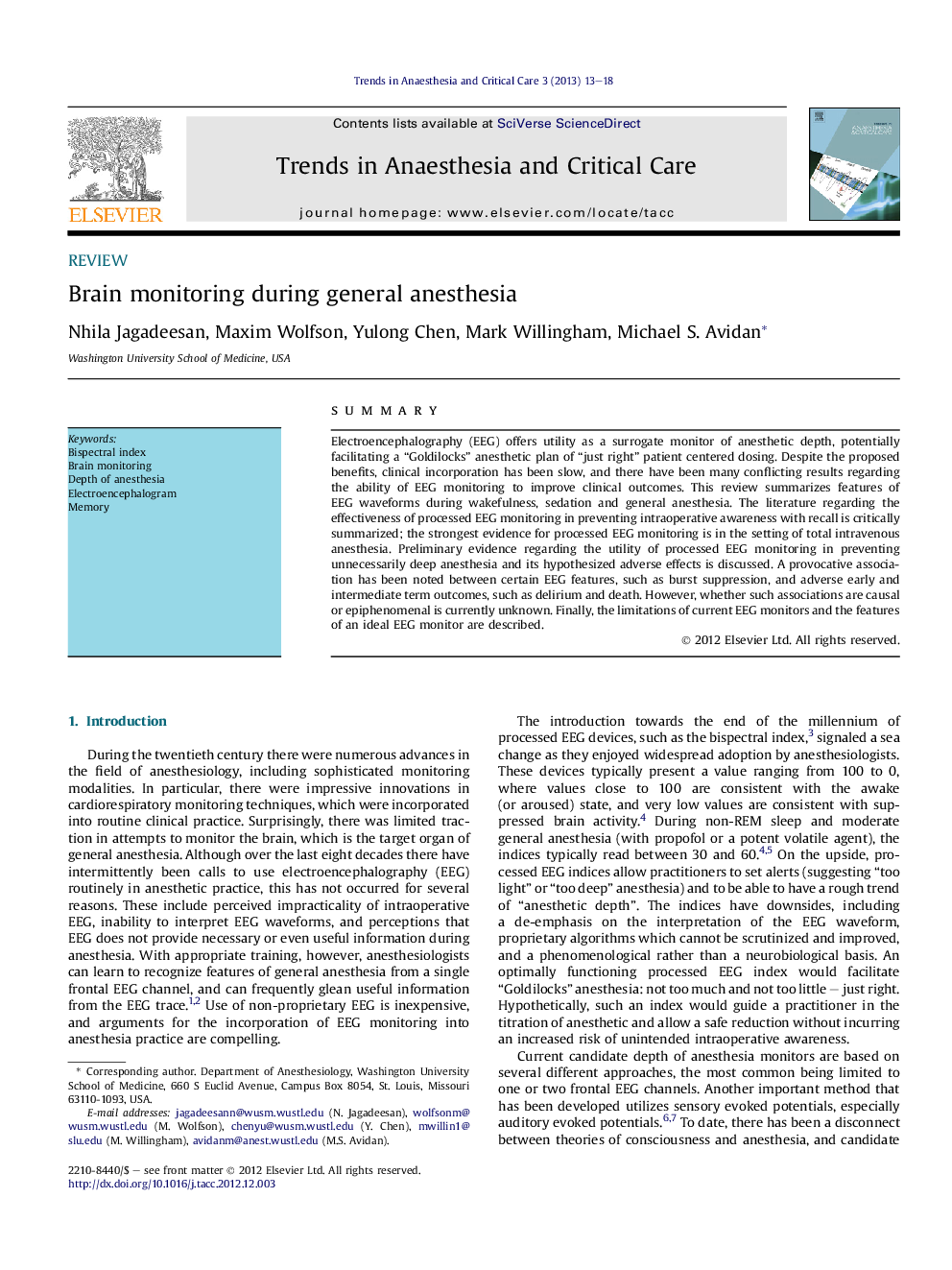| Article ID | Journal | Published Year | Pages | File Type |
|---|---|---|---|---|
| 2772687 | Trends in Anaesthesia and Critical Care | 2013 | 6 Pages |
SummaryElectroencephalography (EEG) offers utility as a surrogate monitor of anesthetic depth, potentially facilitating a “Goldilocks” anesthetic plan of “just right” patient centered dosing. Despite the proposed benefits, clinical incorporation has been slow, and there have been many conflicting results regarding the ability of EEG monitoring to improve clinical outcomes. This review summarizes features of EEG waveforms during wakefulness, sedation and general anesthesia. The literature regarding the effectiveness of processed EEG monitoring in preventing intraoperative awareness with recall is critically summarized; the strongest evidence for processed EEG monitoring is in the setting of total intravenous anesthesia. Preliminary evidence regarding the utility of processed EEG monitoring in preventing unnecessarily deep anesthesia and its hypothesized adverse effects is discussed. A provocative association has been noted between certain EEG features, such as burst suppression, and adverse early and intermediate term outcomes, such as delirium and death. However, whether such associations are causal or epiphenomenal is currently unknown. Finally, the limitations of current EEG monitors and the features of an ideal EEG monitor are described.
